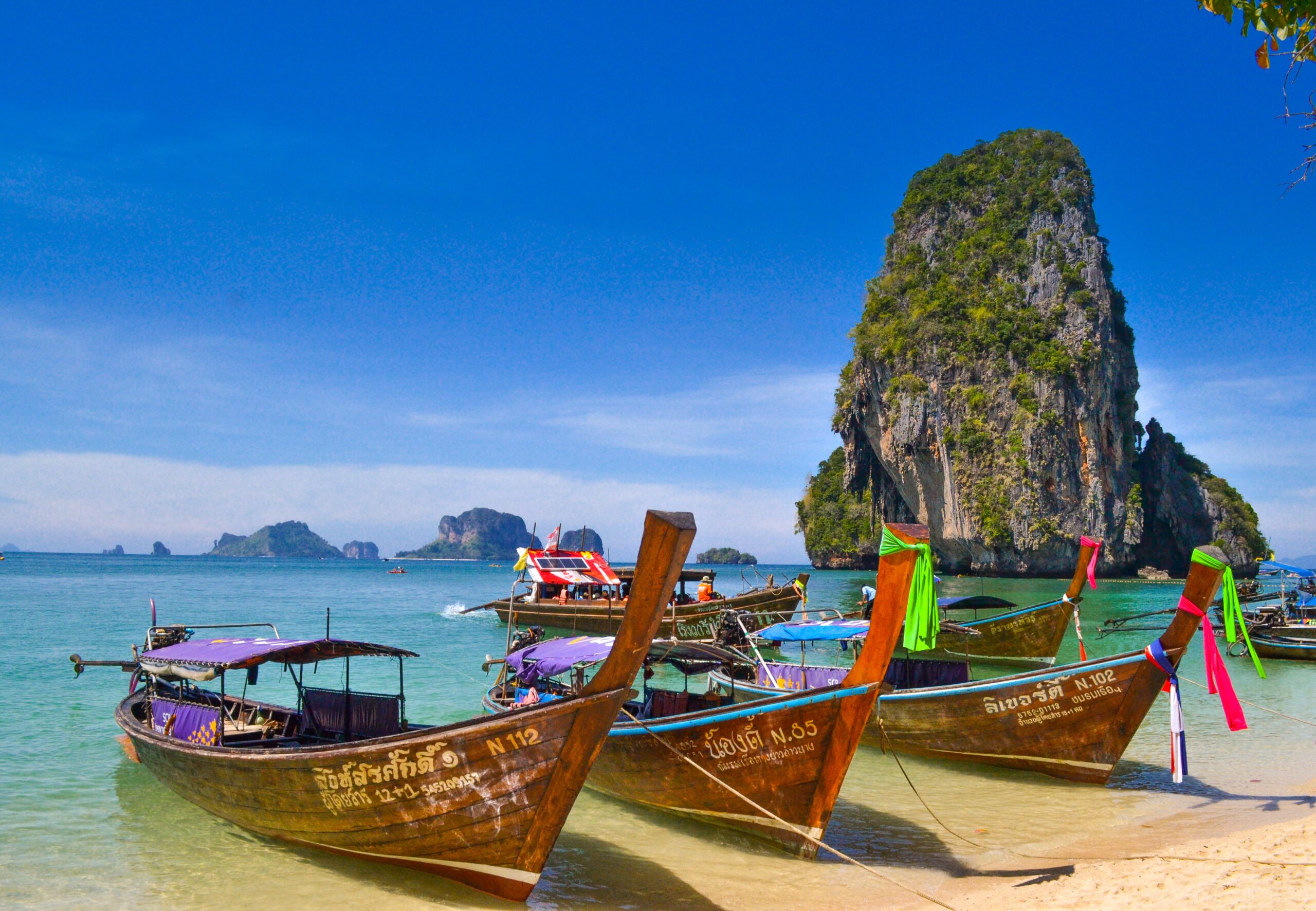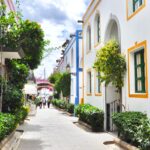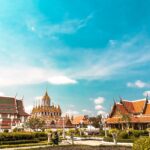GEOGRAPHY
Thailand is in the heart of Southeast Asia. Cambodia and Laos border the country to the east and northeast, and Myanmar lies to the northwest. To the west is the Andaman Sea and the Gulf of Thailand, southeast of Burma. The long southern region, connecting with Malaysia, is hilly and forested. The highest mountains are in northern Thailand.
PEOPLE & CULTURE
About 90 percent of the people are Buddhist, but about three million Muslims live in the south near the border with Malaysia.
Thai children go to elementary school for six years. Then they may attend high school for another six years, but their families must pay for the education. Boys begin military training in ninth grade.
Food in Thailand is influenced by Chinese and Indian cultures. Most Thai dishes are spicy and many common dishes include hot chilies, lemongrass, basil, ginger, and coconut milk.
Thai farmers cultivate mulberry trees that feed silkworms. The worms create silk, which is made into beautiful silk clothing in Thailand, France, and the United States.
Bangkok is called the Venice of the East because there are 83 canals. As many as 10,000 boats full of fruits, vegetables, and fish crowd the canals and create a floating market.
The city of Bangkok is home to many impressive Buddhist structures featuring gold-layered spires, graceful pagodas, and giant Buddha statues.
NATURE
Rain falls almost every day between the months of May and September. The moist and humid weather encourages the diverse and abundant wildlife in Thailand.
Lotus flowers are common and the favorite flower in Thailand. Lotus flowers live above the surface, but they are rooted in the mud. There are many flowering trees and shrubs, and fruit trees. In the jungle, one can find carnivorous (meat-eating) plants such as the mysterious insect-eating pitcher plant.
The deep forests are home to tigers, elephants, wild ox, leopards, and the Malayan tapir. The tapir is covered in black fur on the first half of its body and white fur to the rear. Cobras and crocodiles are also found in Thailand.
GOVERNMENT & ECONOMY
Known as Siam until 1939, Thailand is the only Southeast Asian country never to have been taken over by a European power. A revolution in 1932 led to a constitutional monarchy.
The king is the leader of the country. The prime minister is picked from among members of the House of Representatives, but is appointed by the king.
Agriculture and tourism are the most important industries in Thailand.
In December 2004, the catastrophic Indian Ocean tsunami hit Thailand, but the country’s economy has largely recovered from the disaster’s effect.
HISTORY
Around 2000 B.C. people built settlements in the hillsides of Thailand. The first one is thought to be Ben Chiang. Pieces of pottery, tools, and jewelry from 200 B.C. to 300 A.D. have been dug up in this area.
Thailand, which means “land of the free,” was known as Siam until 1939.






